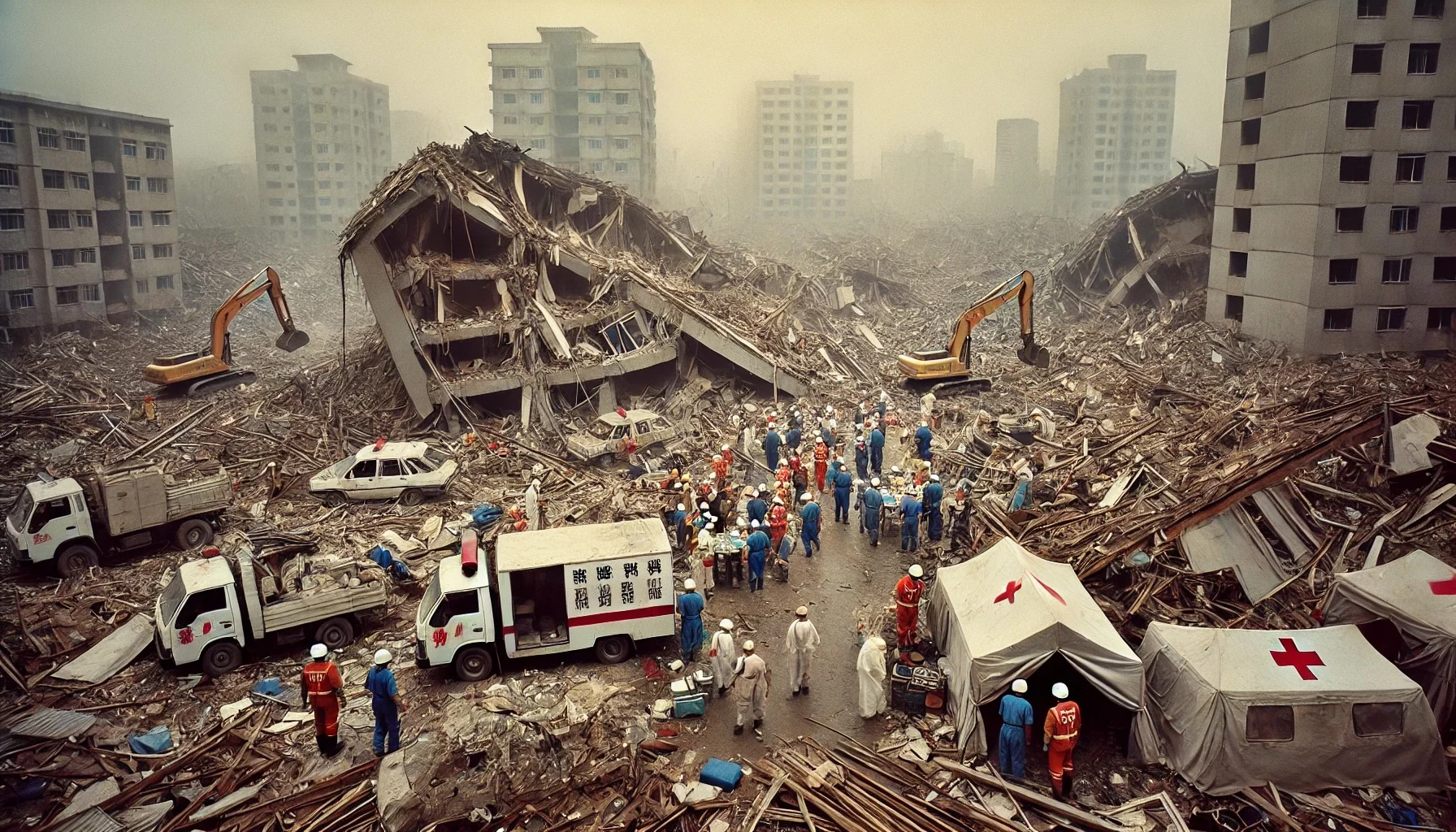
The Tangshan Earthquake
by: The Calamity Calendar Team
July 28, 1976
A City on the Brink
Tangshan, an industrial powerhouse in northern China, was home to over one million people in the summer of 1976. Nestled in the seismically active North China Plain, the city had long been accustomed to minor tremors. However, in mid-July of that year, residents began to notice strange phenomena. Animals behaved erratically, and glowing skies were observed on the evening of July 27, adding an eerie atmosphere to the bustling city.
The Unthinkable Unfolds
In the early hours of July 28, at precisely 3:42 AM, the earth beneath Tangshan heaved with unprecedented violence. The ground shook with a magnitude of 7.5 on the Richter scale—some say it could have been as high as 7.8. Within moments, the city crumbled. Buildings that once stood tall were reduced to rubble, and infrastructure was obliterated. Survivors, groggy from sleep, found themselves thrust into chaos, desperately scrambling to escape the collapsing structures.
A Second Blow
As rescue efforts began amidst the dust and debris, a powerful aftershock struck at 6:45 AM. This tremor, measuring 7.1, exacerbated the devastation. Buildings that had barely withstood the initial quake were now leveled, and the few remaining structures collapsed. The aftershock hampered early rescue operations, causing additional casualties and further entrenching the sense of despair.
Thanks for subscribing!
The Human Toll
The human cost of the Tangshan Earthquake was staggering. Official Chinese government figures estimated the death toll at 242,769, although some sources claim the number could be as high as 655,000. Additionally, around 164,851 people were injured. The sheer scale of the disaster left the city reeling, with nearly 85% of its buildings destroyed and countless families torn apart.
Economic Ruin
Tangshan’s role as an industrial hub meant that the earthquake’s impact reverberated throughout China’s economy. The immediate disruption to industrial output was severe, and the long-term economic loss was estimated to exceed $10 billion in 1976 USD. The national economy felt the strain as one of its critical cities lay in ruins.
A Slow Response
The initial government response to the disaster was delayed, as the sheer scale of the destruction took time to fully comprehend. However, once the magnitude of the disaster was clear, a massive national mobilization effort ensued. Rescue and medical teams from across the country were dispatched to Tangshan, though the political climate at the time limited international aid.
Rebuilding Tangshan
Reconstruction efforts began swiftly, but the road to recovery was long and arduous. The government prioritized the construction of earthquake-resistant structures, keen to prevent such a catastrophe from reoccurring. New policies were implemented to improve earthquake preparedness and response, culminating in the establishment of the China Earthquake Administration.
Learning from Tragedy
In the years since the Tangshan Earthquake, extensive research has been conducted to understand the seismic risks in the North China Plain better. Advances in seismic monitoring technology and building codes have significantly improved China’s resilience to future earthquakes. The lessons learned from Tangshan have been instrumental in shaping China’s disaster management strategies and urban planning policies.
A Legacy of Resilience
The Tangshan Earthquake remains a somber chapter in China’s history, remembered as one of the deadliest earthquakes of the 20th century. Its legacy, however, is one of resilience and improvement. The disaster prompted a nationwide reevaluation of building practices and emergency response protocols, ensuring that future generations would be better protected against the whims of nature.
Through the rubble and the ruin, Tangshan’s story is one of tragedy and tenacity, a testament to the enduring spirit of its people and the transformative power of human ingenuity in the face of natural disasters.
Stay in the Loop!
Become a Calamity Insider and get exclusive Calamity Calendar updates delivered straight to your inbox.
Thanks! You're now subscribed.